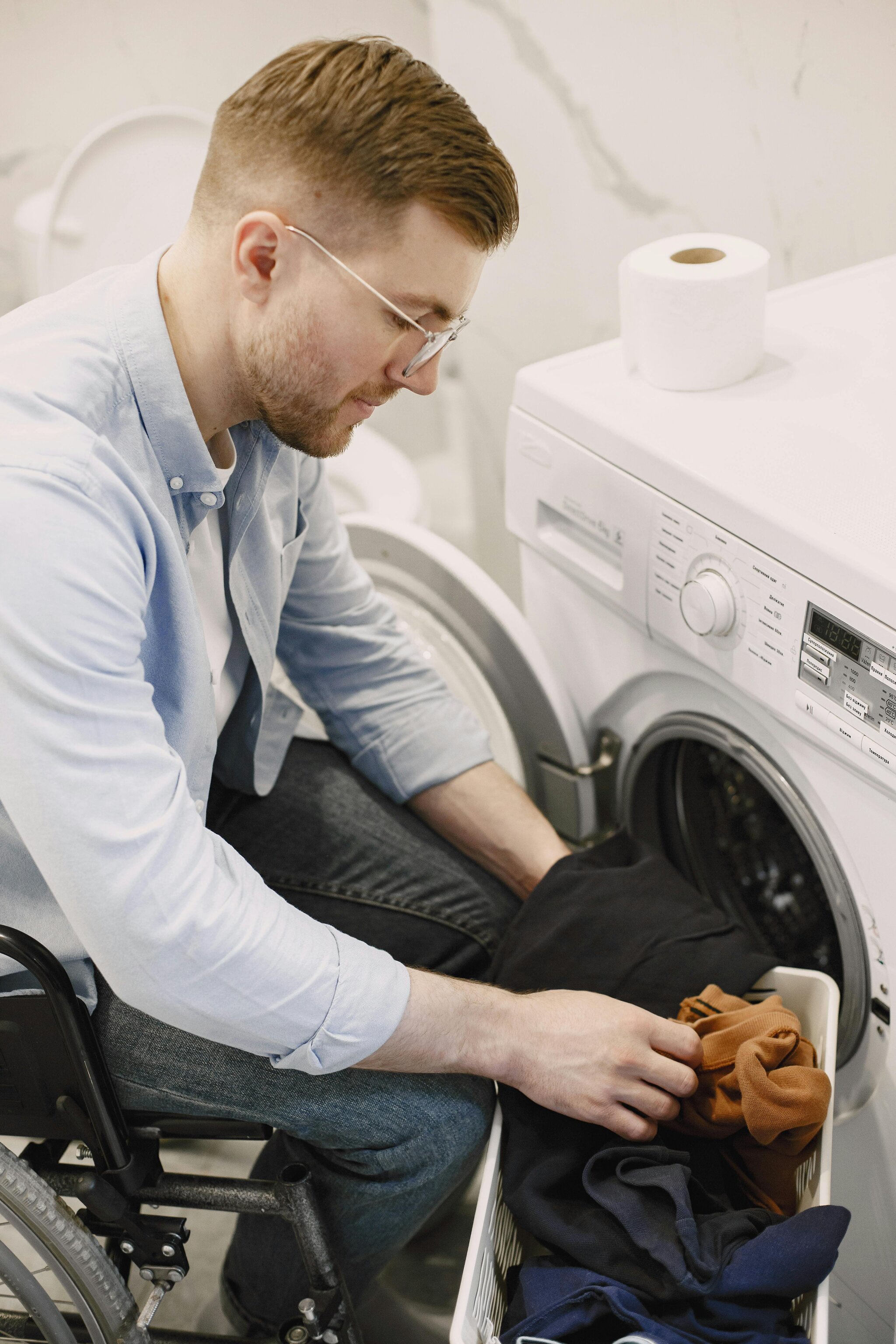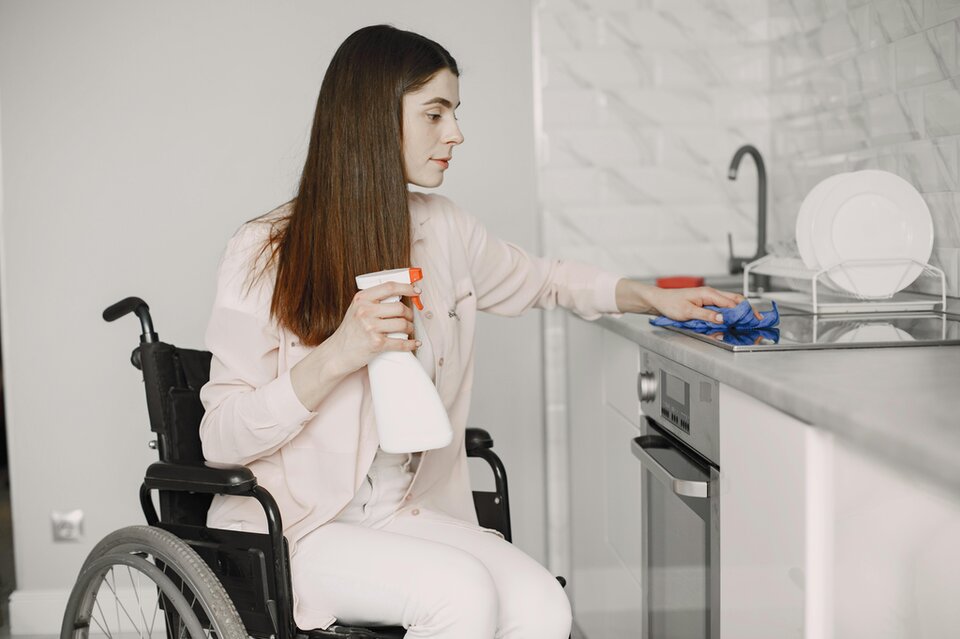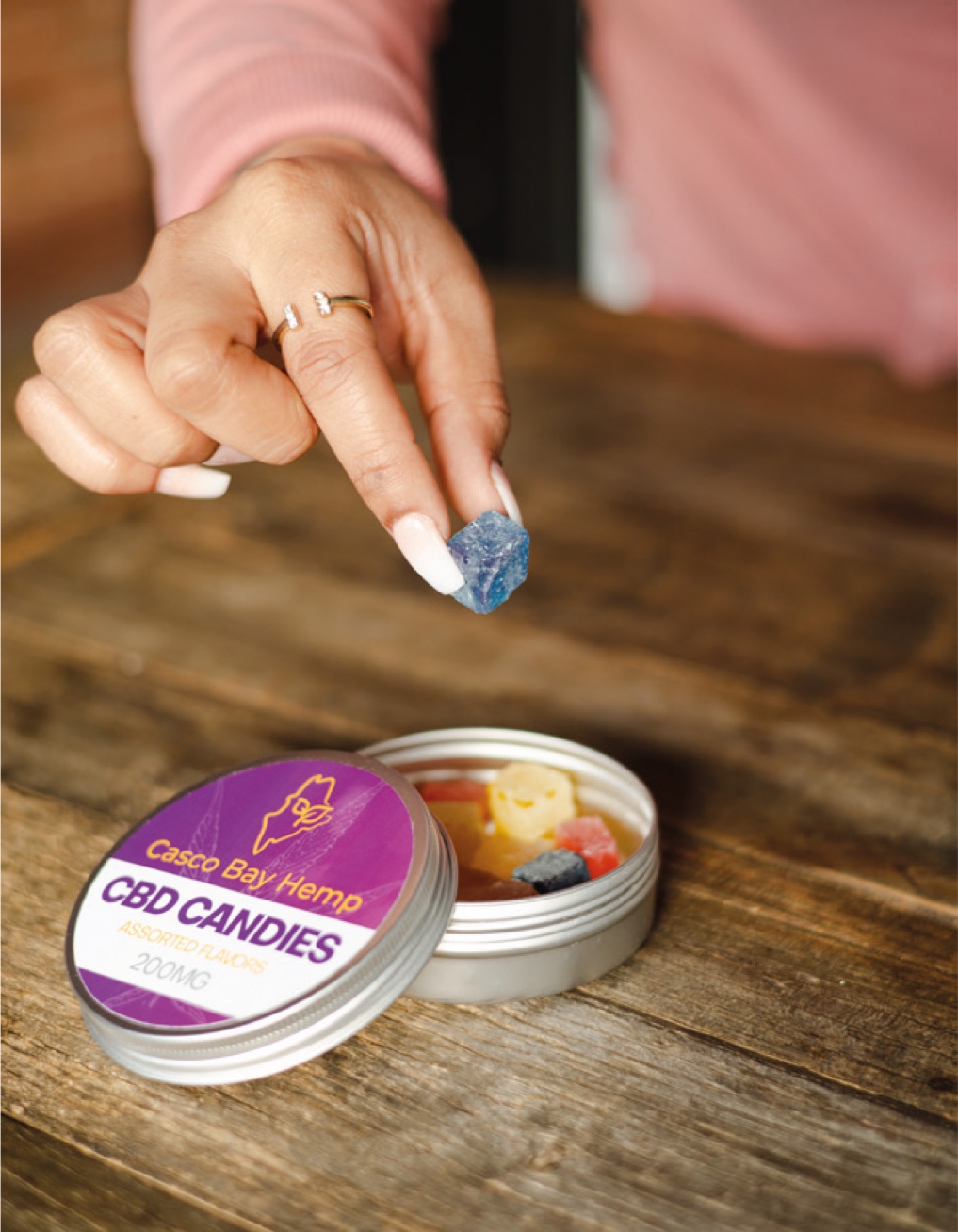Column: CONSUMER PERSPECTIVE
The Role of Inclusivity in Home Care Product Design
KEYWORDS —
INCLUSIVITY;
DIVERSITY;
CONSUMER PSYCHOLOGY;
CULTURE;
GENDER;
ACCESSIBILITY.
Abstract
Studies of major depressive disorder have been correlated with reduced Lactobacillus and Bifidobacteria and symptom severity has been correlated to changes in Firmicutes, Actinobacteria, and Bacteriodes. Gut microbiota that contain more butyrate producers have been correlated with improved quality of life (1).
A study in healthy women providing probiotic yogurt for four weeks showed an improvement in emotional responses as measured by brain scans (2). A subsequent study by Mohammadi et al. (3) investigated the impacts of probiotic yogurt and probiotic capsules over 6 weeks and found a significant improvement in depression-anxiety-stress scores in subjects taking the specific strains of probiotics contained in the yogurt or capsules. Other studies with probiotics have indicated improvements in depression scores, anxiety, postpartum depression and mood rating in an elderly population (4-7).
Other studies have indicated a benefit of probiotic supplementation in alleviating symptoms of stress. In particular, researchers have looked at stress in students as they prepared for exams, while also evaluating other health indicators such as flu and cold symptoms (1). In healthy people, there is an indication that probiotic supplementation may help to maintain memory function under conditions of acute stress.
“
“A study in healthy women providing probiotic yogurt for four weeks showed an improvement in emotional responses as measured by brain scans”
Inclusivity is a well-established principle in the design of personal care and cosmetic products. From foundation shades catering to diverse skin tones to adaptive packaging for people with disabilities, the industry has embraced the concept as an essential pillar of product innovation. But what about home care? Is there space for inclusivity in household cleaning, laundry, and other domestic essentials? As consumers seek products that align with their values and unique needs, the role of inclusivity in home care design is becoming an increasingly relevant discussion.
Product developers in home care (cleaning, air care, etc.) are increasingly recognizing that inclusive design is not just a moral imperative but a smart business strategy. Designing products and packaging that accommodate diverse abilities, cultural backgrounds, and gender identities can significantly enhance user experience and broaden market appeal (Brownett-Gale, 2023; Powers, 2019). Grounded in consumer psychology and behavior research, inclusive design addresses how people’s perceptions, habits, and emotions influence their interaction with home care products.
Designing for Accessibility and Diverse Abilities
Inclusive product design begins with accessibility – ensuring that people with physical, sensory, or cognitive disabilities can use home care products independently and comfortably. Consumer psychology researchers suggest that inclusivity in product design strengthens brand loyalty, trust, and emotional engagement by aligning products with consumers' identities, values, and needs. Basically, when individuals feel represented, they form deeper emotional connections, increasing purchase intent. Additionally, inclusivity fosters perceived fairness and equity, encouraging consumer support for brands that cater to diverse populations. While widely studied in personal care, the same principles apply to home care, where reducing physical, sensory, cognitive, or cultural barriers enhances user experience and long-term satisfaction.
In practice, creating inclusive home care products requires rethinking packaging, formulations, and instructions to remove barriers for diverse users:
Packaging should minimize the physical effort and dexterity needed to access the product, ensuring ease of use for individuals with limited strength, arthritis, or other mobility challenges. Features like pull-ring tabs, easy-grip handles, flip-top caps, and perforated tear strips can make containers more accessible, reducing frustration and enhancing independence. Industry standards, such as ISO 11156, emphasize the importance of designing packaging with low opening force and intuitive motions to accommodate a wider range of users. These considerations not only support those with disabilities but also benefit elderly consumers and anyone who may struggle with traditional packaging (Brownett-Gale, 2023). This approach reflects the broader principle of “design for one to benefit many,” where accessibility-driven innovations ultimately improve convenience and functionality for all users.
Advances in smart packaging are enhancing accessibility for consumers with visual or cognitive impairments, making product information more readily available. Some cleaning brands now incorporate QR codes or NFC tags that, when scanned with a smartphone, provide audio instructions and ingredient details for blind users (Spiceworks, n.d.; Morrison, 2023). UK retailer Tesco has implemented such smart labels, allowing visually impaired shoppers to hear usage directions via their phones, while Unilever’s Persil detergent has introduced scannable codes to help blind consumers identify products independently (Unilever, 2023; Retail Week, 2016) . For those with cognitive or learning disabilities, reducing cognitive load is essential. Packaging should feature clear, plain language and intuitive icons or pictograms to ensure ease of use without requiring complex planning or memory. A minimalist label with step-by-step graphics can guide users through a cleaning task without overwhelming them, aligning with cognitive psychology research that suggests simplifying choices and information can prevent overload and improve task success for all consumers, not just those with diagnosed impairments. A strong example of accessible design is Unilever’s Degree Inclusive deodorant, which was developed for users with limited arm mobility or vision. It features a hooked cap for one-handed use, magnetic closures, an enhanced grip, Braille labels, and a wider applicator for easy coverage—demonstrating how thoughtful design can make everyday tasks more accessible and inclusive.
For consumers with visual impairments, tactile markers and high-contrast labeling play a crucial role in ensuring product accessibility. One notable example is Procter & Gamble’s Herbal Essences shampoo and conditioner bottles, which feature distinct raised patterns—four raised lines for shampoo and a pattern of dots for conditioner—allowing users to differentiate them by touch (Consumer Goods Technology, 2019). As the first mass-produced tactile packaging in the hair care industry, this simple yet effective adaptation empowers blind and low-vision consumers to identify products independently, particularly in private settings like the shower. P&G’s accessibility leader, Sumaira Latif, who is blind herself, emphasizes the significance of such design choices in preserving users’ independence and dignity, noting that no one should have to ask for help to distinguish everyday essentials. Beyond hair care, some cleaning product brands have also incorporated Braille or raised icons on labels to improve accessibility. However, because not all visually impaired individuals read Braille, universal tactile symbols, such as distinctive textures or embossed patterns, can offer a more inclusive approach to accessible packaging.
Accessibility in home care extends beyond physical design to include considerations for sensory sensitivities and health needs. Many consumers experience adverse reactions to strong fragrances or harsh chemicals due to conditions such as asthma, chemical sensitivities, or cognitive differences like autism, making traditional cleaning products difficult to tolerate. Inclusive home care brands address this by offering low-scent or fragrance-free cleaners and air fresheners, as well as incorporating hypoallergenic ingredients. Some air care products now feature adjustable scent intensity or clearly labeled “sensitive” versions, allowing users to customize their experience and avoid overwhelming sensory input (Houlton, 2025). This approach reflects an understanding of neurological and respiratory differences, ensuring that the experience of a clean home remains comfortable for all consumers. Additionally, this strategy aligns with broader consumer behavior trends, as even those without diagnosed sensitivities increasingly prefer milder scents and gentler formulations. By prioritizing these considerations, brands can enhance product accessibility while appealing to a wider market.

Embracing Cultural Inclusivity in Product Design
Culture shapes how consumers perceive cleanliness, preferred scents, and home-care habits. Designing for a global market requires acknowledging these differences rather than applying a one-size-fits-all approach. Consumer psychology research shows that people are drawn to familiar and culturally congruent products that align with their identity and comfort zones.
Scent preferences are a prime example. In Latin American cultures, strong, lingering fragrances signify cleanliness, as seen in products like Fabuloso, which markets its bold scents as a core feature. Clorox’s Fraganzia line similarly caters to Hispanic consumers by incorporating culturally preferred aromas like lavender and citrus, aligning with common three-step cleaning rituals—cleaning, disinfecting, and aromatizing. In contrast, Japanese consumers often prefer mild or unscented cleaning products due to cultural norms like “sume-hara” (smell harassment), which discourages overpowering fragrances. Beyond scent, cleaning habits vary globally. In Brazil, deep-cleaning routines involve heavy scrubbing and large quantities of water, making sudsy, economical products preferable. Meanwhile, Scandinavian consumers prioritize eco-friendly formulations, and Middle Eastern households may incorporate perfumed disinfectants for ritual purity. Successful brands tailor formulation, packaging, and messaging to fit these cultural expectations.
Psychologically, scent is deeply tied to memory and emotion. Research shows that familiar fragrances evoke nostalgia and influence brand loyalty, reinforcing the importance of cultural inclusivity in product design (Powell et al., 2024). Companies like Unilever have responded by adapting fragrances to local aesthetics, such as agarwood or jasmine in Asian markets. Similarly, air freshener brands in the Middle East have introduced aerosol versions of traditional scents like bakhoor to bridge modern convenience with cultural traditions.
By aligning products with regional preferences and rituals, brands build stronger consumer connections, demonstrating cultural awareness and fostering deeper brand affinity.
Breaking Tradition: Gender-Inclusive Branding and Product Development
For decades, home care products have been steeped in gender stereotypes, with marketing overwhelmingly targeting women as the primary (and often sole) household caretakers. While traditional branding reinforced these roles, consumer behavior has evolved. Today, gender inclusivity in branding and product development isn’t just a progressive stance, it’s a strategic necessity. From a human-centered design perspective, breaking away from outdated gender norms enhances consumer perception, expands market reach, and aligns with the reality of modern households.
Marketing has long positioned home care products as a women’s domain, with research showing that 98% of cleaning and baby product ads historically targeted female consumers (Powers, 2019). Men, when represented at all, were often depicted as clueless or out of place in domestic settings. These stereotypes don’t just reflect cultural biases; they actively shape consumer behavior. Studies show that men often avoid products that appear overly feminine due to social pressures, a phenomenon rooted in consumer psychology concepts like “precarious manhood.” Meanwhile, women are generally comfortable with neutral branding, meaning a gendered approach is more likely to exclude than include potential buyers. Brands that continue to lean on outdated stereotypes risk alienating half of their potential market.
The most effective brands today shift the focus from who “should” be using a product to how well it works. Packaging trends reflect this shift: gender-neutral designs favor clean, modern aesthetics with minimalistic branding and neutral or bold colors, avoiding the soft pastels and floral motifs traditionally coded as feminine (Connolly, 2022). A simple rebranding—shifting from a product name like Gentle Touch to Ultra Clean Spray—can make a significant difference in broadening consumer appeal. Inclusive messaging also plays a role. Campaigns like Procter & Gamble’s #ShareTheLoad in India have successfully challenged traditional gender roles, normalizing shared household responsibilities and encouraging a broader consumer base to engage with the category.
Beyond branding, product formulation plays a critical role in inclusivity. Many cleaning products have historically defaulted to “feminine” scent profiles—floral, fruity, or powdery—assuming that women were the primary buyers. But consumer insights reveal a preference for more neutral, universally appealing scents like citrus, pine, or fresh linen, particularly among younger consumers who prioritize functionality over traditional gender cues. Successful brands, such as the earlier mentioned inclusive Degree product, recognize that inclusivity isn’t about erasing identity but offering choice. Providing multiple fragrance options, neutralizing packaging cues, and emphasizing performance over stereotypical messaging make products more inviting to a broader audience.
Brands like Method and Seventh Generation have already embraced gender-neutral branding, ensuring their packaging and messaging feel accessible to all. Legacy brands, too, are adapting—Mr. Clean, once a hyper-masculine character, now appears in ads showcasing men as active participants in household cleaning rather than reinforcing gendered expectations. The reality is that Millennials and Gen Z consumers expect inclusivity. They gravitate toward brands that align with modern household dynamics and reject those that feel out of touch. In the end, gender-inclusive branding and product development aren’t just about cultural progress—they’re about designing for the way people actually live. By recognizing that cleaning is a shared responsibility, brands not only align with shifting consumer values but also open the door to broader engagement and stronger brand loyalty.
Incorporating inclusivity in home care product design isn’t just a corporate checkbox—it’s a strategic approach rooted in consumer psychology and behavior. Whether it’s a bottle that an arthritic senior can open with ease, a scent that evokes nostalgia across cultures, or an ad that acknowledges fathers as active participants in household care, these thoughtful touches shape consumer perception and brand loyalty. People gravitate toward products that make them feel seen, valued, and respected; and those feelings drive purchasing behavior.
For product developers, this means integrating diverse perspectives from the start: conducting research with users of varying abilities, cultural backgrounds, and genders to uncover unmet needs. It requires applying psychological insights on perception, memory, and identity to refine design choices, ensuring accessibility, intuitive use, and emotional resonance. Success stories like P&G’s tactile packaging or Ariel’s #ShareTheLoad campaign demonstrate that when brands break from traditional molds, they don’t just capture attention, they shift behavior and consumer expectations.
As personalization and technological advancements redefine the market, home care brands have a unique opportunity to make inclusivity a competitive edge. A truly inclusive product doesn’t just clean a home, it connects with consumers on a human level, improving their daily lives. Brands that embrace this shift will not only stand out in the marketplace but also contribute to a more equitable and consumer-friendly future. Because in the end, an inclusive product is simply a better product—one that says, We’ve thought about you, and you belong here.


Studies of major depressive disorder have been correlated with reduced Lactobacillus and Bifidobacteria and symptom severity has been correlated to changes in Firmicutes, Actinobacteria, and Bacteriodes. Gut microbiota that contain more butyrate producers have been correlated with improved quality of life (1).
A study in healthy women providing probiotic yogurt for four weeks showed an improvement in emotional responses as measured by brain scans (2). A subsequent study by Mohammadi et al. (3) investigated the impacts of probiotic yogurt and probiotic capsules over 6 weeks and found a significant improvement in depression-anxiety-stress scores in subjects taking the specific strains of probiotics contained in the yogurt or capsules. Other studies with probiotics have indicated improvements in depression scores, anxiety, postpartum depression and mood rating in an elderly population (4-7).
Other studies have indicated a benefit of probiotic supplementation in alleviating symptoms of stress. In particular, researchers have looked at stress in students as they prepared for exams, while also evaluating other health indicators such as flu and cold symptoms (1). In healthy people, there is an indication that probiotic supplementation may help to maintain memory function under conditions of acute stress.
References and notes
- Bapna, A. (2023, April 19). Ariel’s award-winning ‘Share The Load’ campaign returns for sixth edition. The Drum.https://www.thedrum.com/news/2023/04/19/ariel-s-award-winning-sharetheload-campaign-returns-sixth-edition
- Brownett-Gale, S. (2023). The power of accessible packaging to elevate your brand. Packaging Europe, https://packagingeurope.com/comment/the-power-of-accessible-packaging-to-elevate-your-brand/10210.article
- Connolly, K. B. (2022, September 7). Gender-neutral packaging: Why limit sales based on pronouns? Packaging Digest. https://www.packagingdigest.com/packaging-design/gender-neutral-packaging-why-limit-sales-based-on-pronouns-
- Consumer Goods Technology. (2019, January 10). Herbal Essences designs bottles for visually impaired.https://consumergoods.com/herbal-essences-designs-bottles-visually-impaired
- Consumer Goods Technology. (2012, July 16). Clorox uses consumer insights for Hispanic line. Consumer Goods Technology.https://consumergoods.com/clorox-uses-consumer-insights-hispanic-line
- Dublino, J. (2011, September 13). Scent marketing connects to Hispanics on a deep cultural level. Hispanic Marketing & Public Relations. https://hispanicmpr.com/resources/old-articles/scent-marketing-connects-to-hispanics-on-a-deep-cultural-level/
- Houlton, L. (2024, March 25). How to design a home that is 'soft on the senses'. Homes & Gardens. https://www.homesandgardens.com/solved/design-a-home-that-is-soft-on-the-senses
- International Organization for Standardization. (2011). ISO 11156:2011 – Packaging—Accessible design—General requirements.https://www.iso.org/standard/50175.html
- Kärcher. (n.d.). Everyone likes it clean. Kärcher.https://www.kaercher.com/us/inside-karcher/newsroom/kaercher-stories/international-study-everyone-likes-it-clean.html
- Morrison, O. (2023, August 16). Tech allowing partially sighted shoppers to hear what’s on a product label. FoodNavigator.https://www.foodnavigator.com/Article/2023/08/16/Tech-allowing-partially-sighted-shoppers-to-hear-what-s-on-a-product-label/
- Powell, K. K., Rey, M. P., & Alexander, A. (2024). Strength of the sweep: Exploring the cleaning culture of Black women consumers. Journal of Marketing Development and Competitiveness, 18(2), 1-15.https://doi.org/10.33423/jmdc.v18i2.7036
- Powers, K. (2019). Shattering Gendered Marketing. American Marketing Association – Marketing News, https://www.ama.org/marketing-news/shattering-gendered-marketing/
- Retail Week. (2016, April 4). Tesco to roll out RFID smart labels to a further 300 stores.https://www.retail-week.com/tech/tesco-to-roll-out-rfid-smart-labels-to-a-further-300-stores/7004491.article
- Reynolds, M. (2021, May 5). People with disabilities gain access with Degree's inclusive deodorant pack. Packaging World.https://www.packworld.com/industries/other-packaged-goods/cosmetics-personal-care/article/21415759/people-with-disabilities-gain-access-with-degrees-inclusive-deodorant-pack
- Spiceworks. (n.d.). What is near-field communication (NFC)? Spiceworks.https://www.spiceworks.com/tech/networking/articles/what-is-near-field-communication/
- Spielmann, N., Dobscha, S., & Lowrey, T. M. (2021). Real men don’t buy “Mrs. Clean”: Gender bias in gendered brands. Journal of the Association for Consumer Research, 6(2), 211-222.
- Unilever. (2023, May 18). Persil adds new QR codes on packs to improve accessibility.https://www.unilever.com/news/news-search/2023/persil-adds-new-qr-codes-on-packs-to-improve-accessibility/

